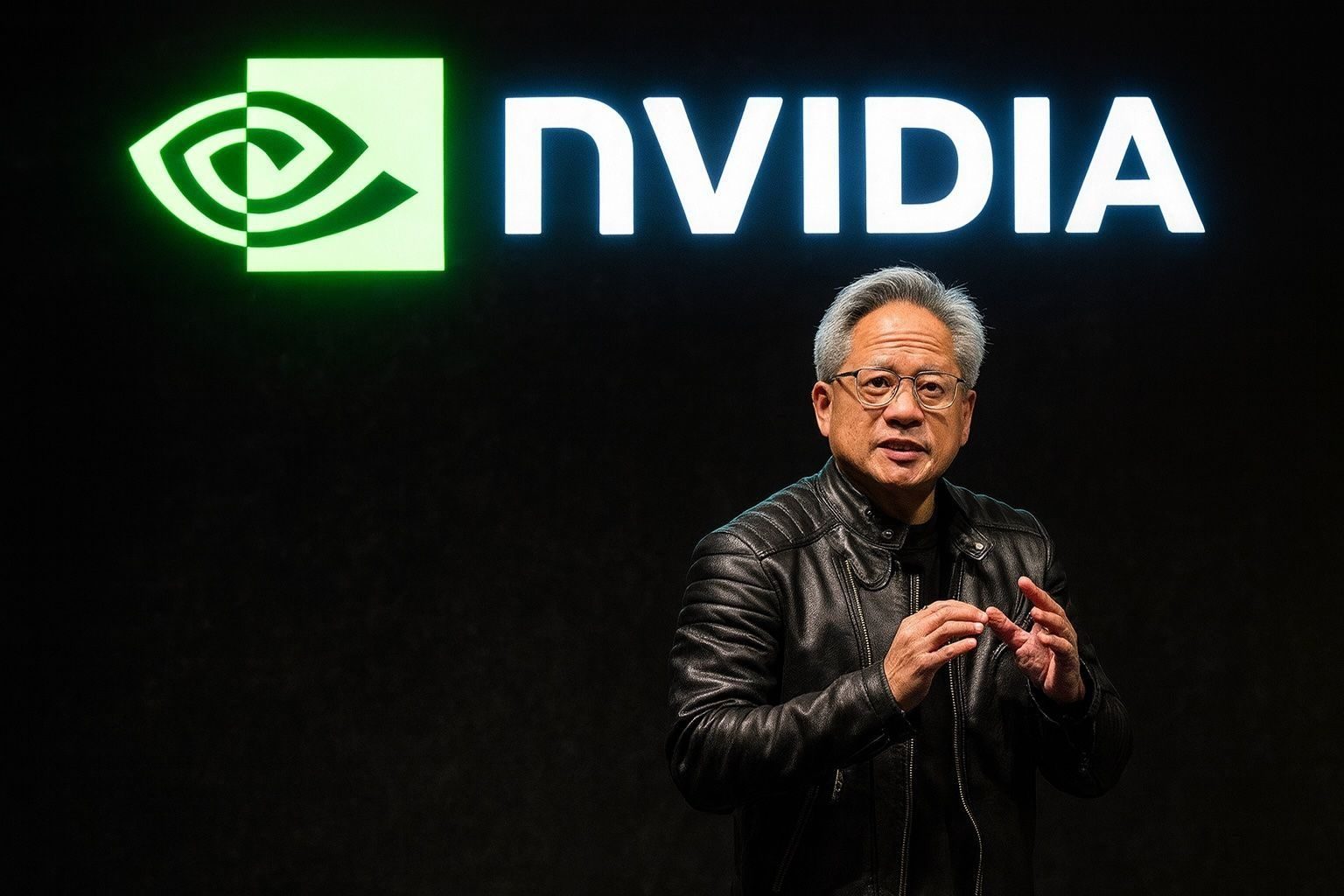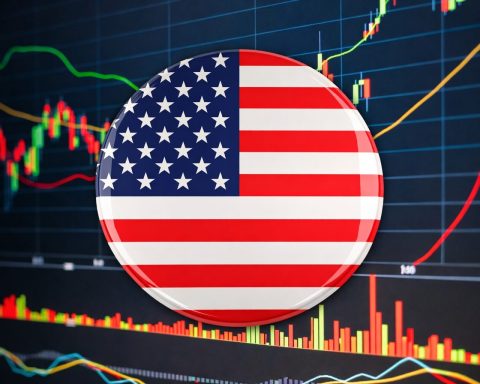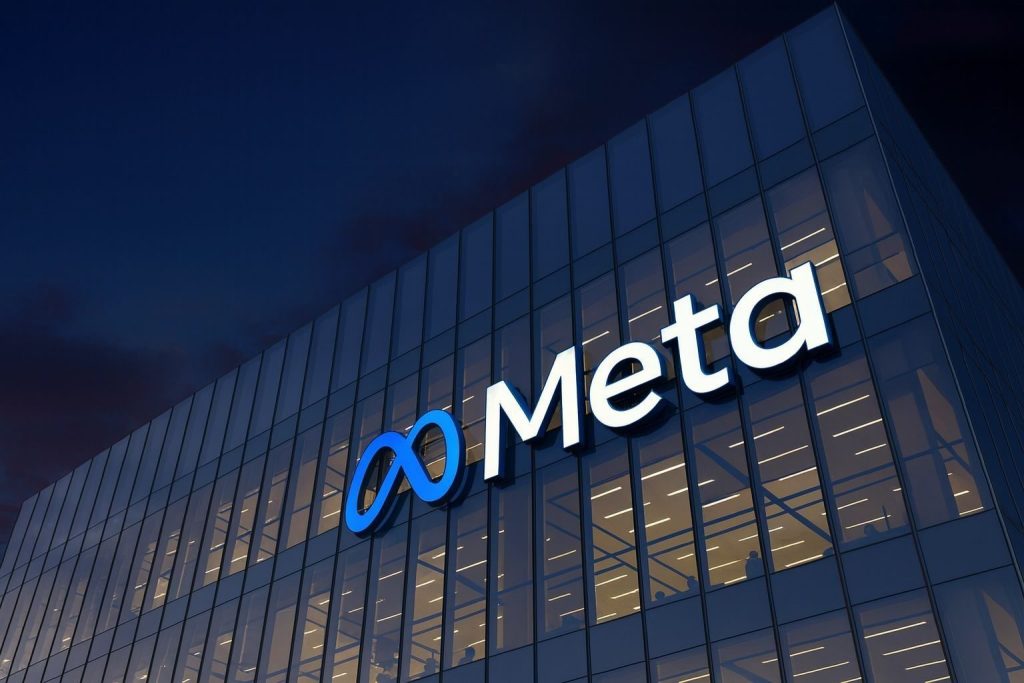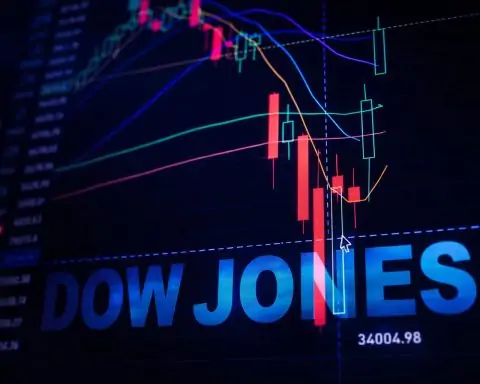Nvidia stock is opening the final Friday of November under a bright but slightly stormy AI sky: the share price is hovering around $180–$182 in premarket trading, Wall Street is still calling for big upside, and a high‑profile backlash against the company’s accounting has sparked a rare defensive memo from the world’s most valuable chipmaker. [1]
Nvidia stock price snapshot for 28 November 2025
- Last regular close (Wednesday, Nov 26):
Nvidia (NASDAQ: NVDA) closed at $180.26, up about 1.37% on the day before the Thanksgiving break. [2] - Premarket today (Friday, Nov 28):
Various feeds show Nvidia trading around $181 per share in early premarket trading, with some services printing trades near $181.5. [3] - Year‑to‑date performance:
Despite a choppy November, Nvidia is still up roughly one‑third in 2025, keeping it firmly in the lead pack of mega‑cap AI winners. [4] - November drawdown:
Shares have fallen about 10% this month as investors reassessed stretched AI valuations and reacted to new competitive headlines, especially around Alphabet’s custom AI chips. [5]
In other words: Nvidia is still a giant winner for 2025, but the easy, straight‑up part of the rally is clearly over—for now.
Today’s biggest Nvidia headlines (28 November 2025)
To understand Nvidia stock today, you really need to know what hit the tape this morning and over the last 24 hours.
1. “Brutal month, but massive AI comeback?” – Wall Street still bullish
A widely circulated piece on TradingView/GuruFocus notes that Nvidia shares are down about 10% in November, largely on concerns about rich AI valuations and competitive moves from Alphabet. Still, the article highlights that the vast majority of covering analysts rate Nvidia a “Buy” or “Outperform”, with an average 12‑month price target around $250, implying nearly 40% upside from recent levels. [6]
Mizuho’s Vijay Rakesh is cited reiterating an Outperform rating with a $245 price target, pointing out that demand for Nvidia’s latest Blackwell GPUs appears resilient and effectively sold out. [7]
2. New bullish price target: Bernstein sees ~50% upside
A separate piece syndicated via CryptoRank/Watcher.Guru reports that Bernstein has issued a fresh note projecting Nvidia stock could reach $272 per share, roughly 50% above the current ~$180 level. [8]
According to that coverage:
- Bernstein kept a “Strong Buy” / Outperform stance.
- The note followed Nvidia’s unusual weekend memo to analysts addressing a wave of negative commentary on working capital, receivables, and so‑called “revenue circularity.” [9]
- Other big firms—including Bank of America, Citigroup and Phillip Securities—are also cited as maintaining bullish ratings on NVDA. [10]
For short‑term traders, the key takeaway is that the Street hasn’t flinched: consensus targets in the $250–$260 range remain intact even after the November pullback. [11]
3. Nvidia’s memo and the Burry / Chanos accounting broadside
This week’s biggest qualitative story is the clash between Nvidia and a growing camp of vocal skeptics:
- Michael Burry (of The Big Short fame) and Jim Chanos have questioned whether Nvidia’s investments in its own customers may be inflating reported revenue, drawing comparisons—fair or not—to past accounting blow‑ups. [12]
- Nvidia responded with a detailed memo to sell‑side analysts, rebutting claims about vendor financing, receivables quality and depreciation assumptions. Reuters reports the memo also explicitly argued why Nvidia should not be compared to fraud cases like Enron or WorldCom, though it did concede that new Blackwell chips carry lower gross margins and higher warranty costs due to complexity. [13]
- Insider Monkey notes that Bernstein viewed Nvidia’s explanations as “generally reasonable” and said the memo helped clear up several points that had been weighing on investor sentiment, prompting the reiteration of its $275 target. [14]
Practically, this memo campaign is about protecting a ~$4.5 trillion valuation (down from a peak near $5 trillion earlier this month), and about keeping the narrative focused on AI demand rather than accounting fears. [15]
4. AI predicts Nvidia’s price for December 1
Adding a distinctly 2025 flavour to all this, Indonesian platform Pintu, citing research from Finbold, published an article titled “Nvidia Stock Price Prediction December 1, According to AI”. [16]
They asked three large language models—ChatGPT, Claude Sonnet 4, and Gemini 2.5 Flash—to forecast Nvidia’s price for December 1, 2025:
- Average AI prediction: $178.25, about 1.1% below the current $180.26 reference price used in the analysis.
- One model (Claude) sees a sharper drop to around $168.75 (‑6.4%), while the others expect mild gains to the $182–$183 range. [17]
Even the article itself stresses that this AI‑based forecast contrasts sharply with human analysts, who remain broadly positive with much higher 12‑month targets. It’s a good reminder that short‑term price calls—human or machine—are guesses, not guarantees.
Fundamentals: Nvidia is still posting eye‑popping numbers
Underneath the noise, Nvidia’s latest quarter (reported earlier in November) remained astonishing:
- Quarterly revenue: around $57 billion, up roughly 62% year over year, beating already‑lofty expectations. [18]
- Data center & AI chips: roughly $50+ billion of that came from data‑center products used to train and run large AI models—by far Nvidia’s main growth engine. [19]
- Guidance: management guided for roughly $65 billion in revenue next quarter, implying that hyperscalers (big cloud and AI customers) are still ramping spending. [20]
- Backlog & supply commitments: Evercore and other analysts highlight that Nvidia’s supply commitments are up more than 60% and that the company has disclosed hundreds of billions of dollars in data‑center orders across 2025–2026, pointing to multi‑year visibility. [21]
Yes, margins on the new Blackwell family are a bit lower, and warranty costs higher, but that’s being framed as the price of staying on the bleeding edge of AI performance rather than a structural problem. [22]
Competition: Google TPUs, Meta and the AI arms race
The burst of volatility earlier this week came after reports that Meta Platforms is in talks to use Alphabet’s custom Tensor Processing Units (TPUs) in future data centers, potentially reducing its reliance on Nvidia GPUs. [23]
Key points from that ongoing story:
- The mere idea of Meta shifting more workloads to Google’s chips helped trigger a quarter‑trillion‑dollar swing in Nvidia’s market cap from its recent peak, according to multiple press accounts. [24]
- Nvidia responded unusually directly on X (Twitter), publicly congratulating Google on its AI successes while insisting its own chips remain “a generation ahead” of rivals—an uncharacteristically defensive tone that drew commentary even from researchers at Google’s DeepMind. [25]
- AInvest’s AI‑assisted analysis frames Alphabet’s TPUs as a credible alternative but argues that the AI market is still defined by “compute scarcity”—meaning there’s likely room for both Nvidia’s GPUs and custom ASICs for years to come. [26]
For investors, this boils down to a simple tension:
Can Nvidia stay the default choice for cutting‑edge AI, even as the biggest customers pour billions into in‑house chips?
So far, the Street’s answer is “yes, mostly”, but the November wobble shows how sensitive the stock is to any hint that mega‑cap customers might diversify away.
China, export controls and offshore AI training
Another big theme in today’s Nvidia coverage is geopolitics:
A CoinCentral deep‑dive describes how Chinese tech giants like Alibaba and ByteDance are increasingly training AI models in overseas data centers (notably in Southeast Asia) to keep using Nvidia’s advanced chips despite U.S. export restrictions. [27]
Highlights from that report:
- U.S. rules have sharply limited sales of Nvidia’s high‑end H‑series chips to China, forcing companies to either use lower‑spec local variants or move training offshore. [28]
- Chinese regulators have gone further in some cases, reportedly banning ByteDance from using Nvidia chips in certain domestic data centers, as part of a broader push to favour homegrown semiconductors in state‑backed projects. [29]
- Demand for Nvidia’s China‑specific RTX6000D GPU has been relatively weak, underlining the performance gap between local alternatives and Nvidia’s flagship parts. [30]
The net effect is messy:
- Near‑term negative: Regulatory friction limits Nvidia’s ability to sell its highest‑margin chips into one of the world’s biggest AI markets.
- But also a backhanded compliment: Chinese firms are going to impressive lengths—leasing overseas data centers and re‑architecting workflows—just to keep accessing Nvidia’s hardware, underscoring how central its technology still is. [31]
Flows: insiders trim, institutions hold, and Peter Thiel exits
On the ownership side, there are several notable datapoints in today’s news flow:
- An AInvest summary says about 65% of Nvidia’s float is held by institutional investors, and corporate insiders have sold over 126,000 shares in the last quarter—significant, but small relative to Nvidia’s colossal market cap. [32]
- A trio of MarketBeat notes show smaller advisory firms tweaking their Nvidia positions—some increasing stakes, others trimming—typical 13F housekeeping rather than clear directional calls. [33]
- More dramatically, a Nasdaq/Motley Fool feature reveals that Palantir co‑founder Peter Thiel sold his entire Nvidia stake (around 537,000 shares) in Q2 2025, raising more than $90 million and reallocating some of that into Microsoft and Apple. [34]
The Thiel sale understandably spooked some investors—he’s one of the most closely watched tech investors on the planet—but the article emphasises that:
- Nvidia’s Q3 results remain extremely strong, with revenue growth actually accelerating. [35]
- On forward earnings estimates, Nvidia’s valuation multiple is now comparable to or even lower than some other mega‑cap tech names like Apple and Microsoft. [36]
So far, markets appear to be treating Thiel’s move more as a high‑profile portfolio rotation than a verdict against Nvidia’s long‑term AI role.
How Wall Street values Nvidia stock right now
Putting together the latest data across today’s articles:
- Ratings:
- Price targets:
- Valuation:
- AInvest pegs Nvidia at roughly 25× forward earnings, below its 10‑year average of around 35× and with a 2026 PEG ratio near 0.55, versus roughly 1.4 for the broader AI sector. [42]
The consensus framing: expensive, but not insane given Nvidia’s growth and competitive position, especially compared to some smaller AI names trading on far richer multiples.
Technical context: key levels traders are watching
Technical analysis from several outlets (including Investing.com and AI‑generated summaries on AInvest) paints a picture of a stock that’s cooling off but not broken: [43]
- Price is above its 200‑day moving average (around $169), which many chart‑watchers see as an important long‑term support zone. [44]
- The high‑$170s to low‑$180s has emerged as a short‑term battleground: dip buyers keep stepping in here, but rallies toward the $190–$200 region have recently been sold. [45]
- Volatility has picked up as options traders adjust to the stock no longer making new highs every quarter. Earlier this year, options markets were pricing ~6% post‑earnings moves around results, underscoring how much is riding on each data point. [46]
For traders, that suggests a wide but tradable range unless a new narrative shock (positive or negative) breaks the stalemate.
What all this means for Nvidia investors
Here’s how today’s newsflow stacks up in simple terms:
Reasons bulls are still comfortable
- Fundamentals remain extraordinary: Huge revenue, high margins and guidance that still implies strong AI spending into 2026. [47]
- Demand > supply: Blackwell chips are described as effectively sold out, and customers keep raising capex plans. [48]
- Wall Street support: Dozens of buy ratings, high conviction from major brokers, and multiple targets 40–90% above today’s price. [49]
- Valuation vs growth: A forward P/E in the mid‑20s looks less extreme as Nvidia grows into its multiple and some peers trade richer. [50]
Risks that bears and skeptics highlight
- Concentration risk: A big chunk of Nvidia’s revenue comes from a relatively small group of hyperscale cloud and AI customers, many of whom are developing custom chips (like Google’s TPUs). [51]
- Geopolitical pressure: Export controls and Chinese industrial policy complicate Nvidia’s access to a key growth market. [52]
- Accounting and governance scrutiny: High‑profile short sellers questioning revenue quality means Nvidia will be under a microscope for any slip in cash flow, margins or disclosure. [53]
- Crowded positioning: After becoming the world’s most valuable company and a cornerstone of the AI trade, Nvidia is widely owned; crowded trades can reverse quickly when sentiment turns. [54]
Questions to ask yourself before buying, holding or selling NVDA
Rather than a simple “buy / sell” verdict, it’s more helpful to frame Nvidia in terms of your own risk tolerance and time horizon:
- Timeframe:
- Are you thinking in quarters (trading technical levels and headlines), or years (riding the broader AI infrastructure cycle)?
- AI concentration:
- How comfortable are you with a portfolio that may be heavily exposed to one dominant AI hardware vendor?
- Competition view:
- Do you believe hyperscalers’ custom chips (like Google’s TPUs) will replace Nvidia, or mostly supplementits GPUs in a still‑capacity‑constrained world?
- Regulation & geopolitics:
- How much weight do you put on future export controls, antitrust pressure or political scrutiny of AI companies and chip suppliers?
- Volatility tolerance:
- Can you withstand double‑digit drawdowns without panicking, given how central Nvidia is to the AI narrative and how quickly sentiment can swing?
If your answers lean long‑term, high‑conviction and high‑volatility‑tolerant, you’ll likely interpret today’s headlines as normal turbulence in a still‑dominant growth story. If you’re more short‑term or risk‑averse, the mix of accounting scrutiny, regulatory risk and competition may signal that the easy part of the Nvidia trade is behind us, even if the company itself keeps executing.
Important disclaimer
This article is for informational and educational purposes only and is not financial advice, investment recommendation, or an offer to buy or sell any security. Nvidia stock (and any individual stock) can be volatile and risky. Always do your own research, consider speaking with a qualified financial adviser, and make decisions based on your own objectives, financial situation and risk tolerance.
References
1. www.marketwatch.com, 2. www.marketwatch.com, 3. marketchameleon.com, 4. cryptorank.io, 5. www.gurufocus.com, 6. www.gurufocus.com, 7. www.gurufocus.com, 8. cryptorank.io, 9. cryptorank.io, 10. cryptorank.io, 11. www.gurufocus.com, 12. pintu.co.id, 13. www.reuters.com, 14. www.insidermonkey.com, 15. www.reuters.com, 16. pintu.co.id, 17. pintu.co.id, 18. nvidianews.nvidia.com, 19. nvidianews.nvidia.com, 20. www.reuters.com, 21. www.ainvest.com, 22. www.reuters.com, 23. www.reuters.com, 24. timesofindia.indiatimes.com, 25. www.reuters.com, 26. www.ainvest.com, 27. coincentral.com, 28. coincentral.com, 29. coincentral.com, 30. coincentral.com, 31. coincentral.com, 32. www.ainvest.com, 33. www.marketbeat.com, 34. www.nasdaq.com, 35. www.nasdaq.com, 36. www.nasdaq.com, 37. www.gurufocus.com, 38. www.ainvest.com, 39. www.gurufocus.com, 40. cryptorank.io, 41. www.ainvest.com, 42. www.ainvest.com, 43. www.investing.com, 44. www.ainvest.com, 45. www.investing.com, 46. www.reuters.com, 47. nvidianews.nvidia.com, 48. www.gurufocus.com, 49. www.gurufocus.com, 50. www.ainvest.com, 51. www.ainvest.com, 52. coincentral.com, 53. www.reuters.com, 54. www.reuters.com









